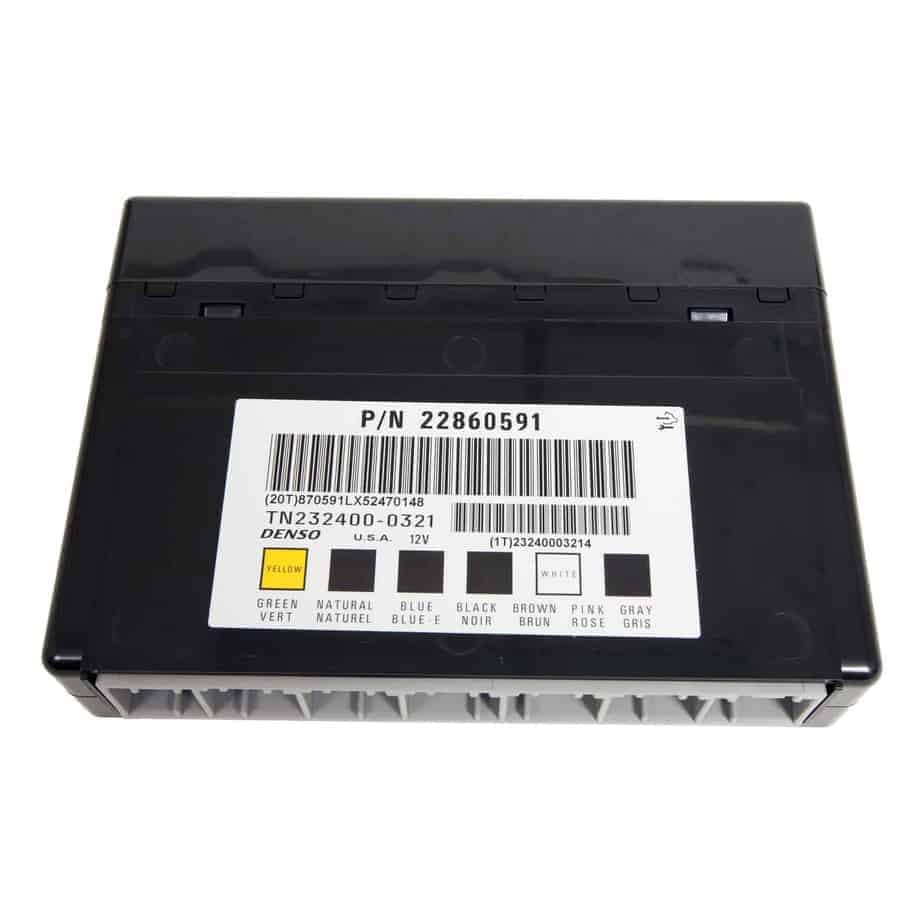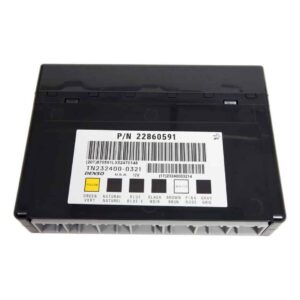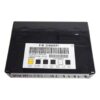Restore Your Vehicle’s Brain and End Electrical Chaos
Is your car acting possessed? Flickering lights, a security system that randomly engages, power windows with a mind of their own, or an engine that refuses to start are all classic signs of a failing Body Control Module (BCM). As a technician with over 20 years of experience, I’ve seen these exact issues countless times. The BCM is the central nervous system for your vehicle’s electronics, and when it goes bad, it can cause a cascade of frustrating and seemingly unrelated problems. Don’t let a faulty BCM leave you stranded or drain your wallet at the dealership.
This is your direct-fit, reliable solution. We offer a genuine GM Body Control Module 15819552, professionally programmed with the latest GM software updates specifically for your vehicle. Simply provide us with your VIN during checkout, and we handle all the complex programming before it ships. This means you get a part that’s ready for installation right out of the box, eliminating the need for expensive scan tools or a trip to the dealer for calibration. It’s the most efficient way to get your car back to 100%.
Common Signs of a Failing BCM
- ✔ Intermittent or non-working power windows, door locks, or interior lights.
- ✔ The security system or alarm acts erratically or prevents the car from starting.
- ✔ Dashboard warning lights (like ABS, Airbag, or Traction Control) illuminate for no reason.
- ✔ Communication error codes, often in the U-series (e.g., U0100, U0140), are stored in the system.
- ✔ The horn honks unexpectedly or the wipers won’t turn off.
- ✔ A parasitic battery drain that kills your battery overnight.
A Technician’s Notebook
I remember a 2010 Chevy Tahoe that came into the shop with a persistent battery drain. The owner had already replaced the battery and alternator, but every morning the battery was dead. A quick parasitic draw test showed a significant current pull. Instead of just guessing, we started pulling fuses. When we pulled the BCM fuse, the draw disappeared. The internal circuitry of the original BCM had failed, keeping several networks awake even with the key off. A new, pre-programmed GM Body Control Module 15819552 fixed it instantly. It’s a textbook example of how a BCM failure can mimic other problems.
A Straightforward Guide to BCM Installation
- ✔ Safety First: Always disconnect the negative terminal from your vehicle’s battery and wait at least 10 minutes to allow capacitors to discharge.
- ✔ Locate the BCM: The location varies by model (see fitment list below). It’s typically found under the driver’s side dash, behind the center console, or near the steering column. A quick search for your specific model will confirm its location.
- ✔ Disconnect and Remove: Carefully unplug all electrical connectors from the old BCM. They have locking tabs that need to be depressed. Once disconnected, unbolt or unclip the module from its mounting bracket.
- ✔ Install the New Module: Mount your new, pre-programmed BCM in the same position and reconnect all the electrical connectors. Ensure they click securely into place.
- ✔ Reconnect and Test: Reconnect the negative battery terminal. Turn the key to the ‘ON’ position (without starting the engine) and test your electronics: power windows, locks, lights, and radio.
- ✔ Perform Relearns (If Needed): Start the vehicle. If an airbag light appears or brake functions seem off, you may need to perform the simple relearn procedures mentioned below with a capable scan tool.
Post-Installation Requirements
Your new BCM is programmed to your VIN, but some vehicles require a final handshake between modules after installation. This is perfectly normal. Key procedures include:
- Airbag System Sync: If the airbag light is on, a scan tool procedure called “Setup SDM Primary Key in BCM” is needed to sync the modules.
- Brake Pedal Position Relearn: On some models, a brake pedal sensor recalibration might be necessary to ensure brake lights and traction control work correctly.
We also have a no-hassle core policy. You are not required to send your old BCM back to us. Keep it, recycle it, or dispose of it as you see fit—no core charge, no extra steps.
Verified Vehicle Compatibility
This BCM, part number 15819552, is a direct replacement for a wide range of GM vehicles and interchanges with the following part numbers: 10382479, 15093910, 15276271, 15299986, 15828601, 15837419, 15872388, 15872421, 15880684, 15921352, 15921353, 15948438, 15948439, 20815898, 20839063, 20864767, 20864768, 20921435, 20921436, 20935349, 22860591, 25826124, 25826125, 25847588, 25847589, 25892622, 25910474, 25934762, 25934763, 95151084.
Frequently Asked Questions
Frequently Asked Questions
Do I really need to provide my VIN?
Yes, absolutely. Your vehicle’s VIN is essential for us to load the correct GM software and vehicle-specific options into the BCM. This step is what makes the installation a simple plug-and-play process for you.
Is this a simple DIY job?
For most individuals with basic hand tools and a bit of patience, yes. The most challenging part is often just accessing the module under the dash. Since we handle the programming, the electrical part is just unplugging the old module and plugging in the new one.
What if my original part number isn’t 15819552?
That’s okay. This BCM replaces a long list of original part numbers. As long as your vehicle is on our compatibility list and your original part number is listed above, this module will work perfectly once programmed to your VIN.
What tools are needed for the post-install relearns?
The Airbag Sync and Brake Pedal Relearn procedures require a professional-grade bidirectional scan tool. Most local repair shops can perform these procedures quickly if they are needed for your vehicle.
Is there a core charge?
No. We do not require you to return your old, failed BCM. There is no core charge and no need to send anything back to us.



